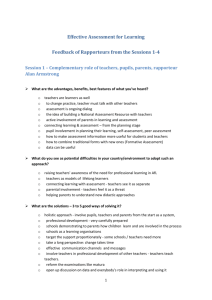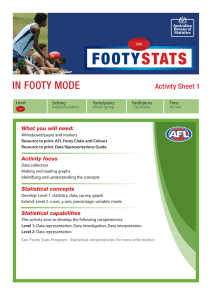Application of Assessment for Learning (AfL) to Improve
advertisement
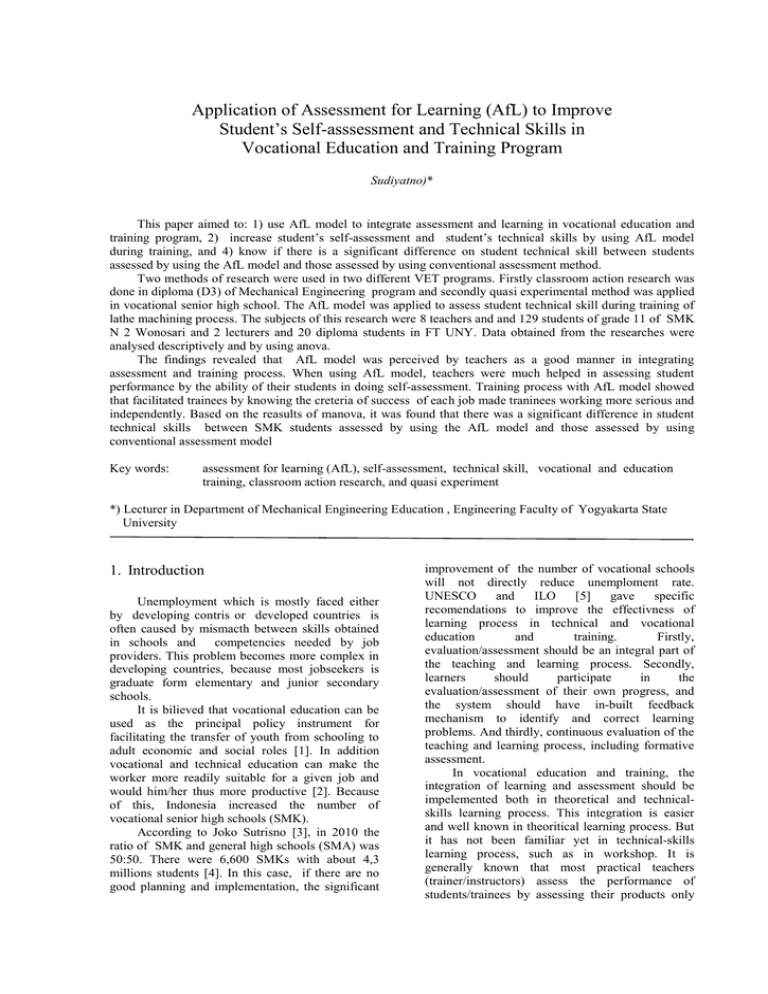
Application of Assessment for Learning (AfL) to Improve Student’s Self-asssessment and Technical Skills in Vocational Education and Training Program Sudiyatno)* This paper aimed to: 1) use AfL model to integrate assessment and learning in vocational education and training program, 2) increase student’s self-assessment and student’s technical skills by using AfL model during training, and 4) know if there is a significant difference on student technical skill between students assessed by using the AfL model and those assessed by using conventional assessment method. Two methods of research were used in two different VET programs. Firstly classroom action research was done in diploma (D3) of Mechanical Engineering program and secondly quasi experimental method was applied in vocational senior high school. The AfL model was applied to assess student technical skill during training of lathe machining process. The subjects of this research were 8 teachers and and 129 students of grade 11 of SMK N 2 Wonosari and 2 lecturers and 20 diploma students in FT UNY. Data obtained from the researches were analysed descriptively and by using anova. The findings revealed that AfL model was perceived by teachers as a good manner in integrating assessment and training process. When using AfL model, teachers were much helped in assessing student performance by the ability of their students in doing self-assessment. Training process with AfL model showed that facilitated trainees by knowing the creteria of success of each job made traninees working more serious and independently. Based on the reasults of manova, it was found that there was a significant difference in student technical skills between SMK students assessed by using the AfL model and those assessed by using conventional assessment model Key words: assessment for learning (AfL), self-assessment, technical skill, vocational and education training, classroom action research, and quasi experiment *) Lecturer in Department of Mechanical Engineering Education , Engineering Faculty of Yogyakarta State University 1. Introduction Unemployment which is mostly faced either by developing contris or developed countries is often caused by mismacth between skills obtained in schools and competencies needed by job providers. This problem becomes more complex in developing countries, because most jobseekers is graduate form elementary and junior secondary schools. It is bilieved that vocational education can be used as the principal policy instrument for facilitating the transfer of youth from schooling to adult economic and social roles [1]. In addition vocational and technical education can make the worker more readily suitable for a given job and would him/her thus more productive [2]. Because of this, Indonesia increased the number of vocational senior high schools (SMK). According to Joko Sutrisno [3], in 2010 the ratio of SMK and general high schools (SMA) was 50:50. There were 6,600 SMKs with about 4,3 millions students [4]. In this case, if there are no good planning and implementation, the significant improvement of the number of vocational schools will not directly reduce unemploment rate. UNESCO and ILO [5] gave specific recomendations to improve the effectivness of learning process in technical and vocational education and training. Firstly, evaluation/assessment should be an integral part of the teaching and learning process. Secondly, learners should participate in the evaluation/assessment of their own progress, and the system should have in-built feedback mechanism to identify and correct learning problems. And thirdly, continuous evaluation of the teaching and learning process, including formative assessment. In vocational education and training, the integration of learning and assessment should be impelemented both in theoretical and technicalskills learning process. This integration is easier and well known in theoritical learning process. But it has not been familiar yet in technical-skills learning process, such as in workshop. It is generally known that most practical teachers (trainer/instructors) assess the performance of students/trainees by assessing their products only in the end of semester. Therefor, how to perform assessment in technical-skills learning process so that learners could participate in the evaluation/assessment of their own progress, and the system could have in-built feedback mechanism to identify and correct learning problems? This paper aims to present results of the application of assessment for learning in vocational education and training. 2. Competency and Assessment 2.1. Competency The meaning of “competency” according to Merriem Webster Online Dictionary is: 1) a sufficiency of means for the necessities and conveniences of life, 2) the quality or state of being competent. Spencer & Spencer [6], stated that a competency is an underlying characteristic of an individual that is causally related to criterionreferenced effective and/or superior performance in a job or situation. Competency is simply the ability to meet particular standards of performance required in the workplace. It can be concluded that an individual is competent, when she/he has achieved the standards of performance set down or is able in doing a such taskjob, that meet a minimum standard qualification. 2.2. Assessment of Competencies Assessment is often defined as a process for obtaining information thst is used for making decisions about students, programs, schools and educational policy[7] . Educational assessment is a ASSESSMENT OF PERFORMANCE ACQUIRED SKILLS, ABILITIES AND KNOWLEDGE formal attempt to determine students’ status with respect to educational variables of interest [8]. Thus, assessment in a competency-based education and training is the process of determining whether a student/trainee has acquired the unit/unites of competencies set down as outcomes of that course. Position of assessment in competency-based education and training can be explained as shown in Figure 1. Traits and characteristics are the foundation of a performance in demonstrating competencies. Through learning process, students/trainees develop their skills, abilities and knowledge. Different combinations of skills, abilities and knowledge will develop different competencies. Finally different competencies possessed by an individual are combined in carrying out different demonstrations or tasks [9]. In this hierarchy, assessment should be applied in every step from observing individual traits and characteristics to assessing individual performance by demonstration . Two tools needed in doing an assessment in competency-based education and training are the instruments and procedures. The tools are used to gather and also to intepret evidence of a unit competency. The first tool is an instrument which is the activity or specific questions used to assess competency by the assessment method previously selected. The secong tool is procedures which are the information or instructions given to the candidate and the assessor about how the assessment is to be conducted and recorded [10]. Demonstration s Competencies ASSESSMENT Integratif Learning Experiences DEVELOPED IN THE LEARNING PROCESS Skills, Abilities, and Knowledge Learning Experiences FOUNDATION Traits and Characteristics Figure 1. A hierarchy of Postsecondary Outcomes (NCES, 2002). 3. Assessment for Learning (AfL) Assesment for learning is the process of seeking and intepreting evidence for use by learners and their teachers to decide where the learners are in their learning, where they need to go and how best to get there [10]. Therefor this model of assessment is developed to help students having self direction of learning and teachers should provide an individual constructive guidance to students. There are ten principles of AfL: a) AfL should be part of effective planning; b) AfL should focus on how students learn; c) AfL should be recognised as central to classroom practice; d) AfL should be recognised as a key professional skill for teachers; e) AfL should be sensitive and constructive because any assessment has an emotional impact; f) AfL should take account of the importance of learner motivation; g) AfL should promote commitment to learning goals and a shared understanding of the criteria by which they are assessed; h) Learners receive constructive guidance about how to improve; and i) AfL develops learners capacity for self-assesment so that they can become reflective and self-managing [10]. To be more helpful in practice, teachers should do three linked aspects of assessment [11]. Firstly, day to day assessment to provide a wide range of evidence of learning in specific contexts. Secondly, periodic review of the evidences compiled to give more comprehensive profile of learner’s achievement. In this step, teachers and learners can make broader review of progress across subject. Thirdly, transitional assessment where teachers can use external tests or tasks and make reports to parents and next teachers. 4. Assessment of Technical-skills Skill learning process conducted in a workshop is intended to help students to learn new skills. Teachers arrange the learning process by giving jobsheets and instructional sheets to students. Then, students make preparation worksheet before doing the task. While students are working the job, teachers are observing and guiding when needed. There are several basic procedures in teaching technical skills: a) each taskjob which introduces new skills should be given in addition to those already mastered by students; b) practicing new skills should begin as soon as possible after they have been demonstrated; c) It is well known that “practice makes perfect”, so that teachers/trainers should provide an opportunty for students to do repeatition; d) instructional sheets shoul be provided to guide students through the pratice steps of the learning job. Three aspects assessed in this learning of technical-skills are working attitudes, working procedures and quality of product. A list of performance statements which are derived from the three aspects is shown in Table 1. Instrument used in this assessment is an observation checklist including clear instructions for assessors (teachers/trainers) and candidates (students/trainees). Teachers use the checklist to gather evidence and take structured notes that can be used as feedback and to enhance objectivity of the assesment decision. Table 1. Aspects of Technical Skills Assessment No. 1 Aspect Working Attitudes 2 Working Procedures 3 Poduct Item Dicipline Good conduct Proper dressing Proper setting steps Proper procedure of using tools and machine Proper procedure of using measurement tools Good in doing maintenance Conducting safety work Fitness of workpiece dimensions 5. Case Study of AfL 5.1. AfL Application in FT UNY AfL was applied in a teaching shop at Engineering Faculty of UNY, where 20 diploma students involved [13]. The students were practicing lathe machining process to produce three different gears: spur, helical and bevel gears. Two lecturers were involved in this case study. Method used was classroom action researh. This research was conducted in three cycles. Two different observation checklists were used. The first checklist used by lecturers to assess student performance and the second cheklist was used by students to do self-assessment. Each cycle consisted of planning, acting, observing and reflecting. Results of this study were shown in Table 2. At the first cycle, it was found that the average score of working attitudes was 29,3. The average score of working procedures was 16.67. The average score of product quality was 58,25. At the second cycle, it was found that the average score of working attitudes was 67.67. The average score of working procedures was 56.67. The average score of product quality was 64.5. At the third cycle, it was found that the average score of working attitudes was 88.33. The average score of working procedures was 82.83. The average score of product quality was 97.5. It can be concluded based on the results that application of AfL had student’s technical skills in all aspects. improved and guide the students. Teachers also assessed students working attitudes and procedures by using the observation checklists. In the end of the learning process: a) students filled a form of day to day report, b) teachers gave feedback to students based on the notes of observation. This research was conducted in one semester. Three skills of learning targets, i.e. attitude, cognitive and psychomotoric skills, as dependent variables were assessed. As the independent variable was the use of AfL model in technicalskills learning. There were three kinds of instrument: two observation checklists were used to measure attitude and psychomotoric skills and knowledge test was used to measure cognitive skills. Data obtained from this research were analysed by using MANOVA to examine whether there was significant different student performance between the experiment group and the control group. The results of this study are shown in Figure 3. It is revealed that based on Pillai’s, Wilk’s, Hotelling’s and Roy’s procedures, the value of Sig. was 0,000 which is smaller than 0,05. It was concluded that there was a significant difference in student performance between students assessed by using the AfL model (the experiment group) and those assessed by using conventional assessment model (the control group). Table 2. Average Score of Technical-Skills Assessment Aspect Working Attitudes Working Procedures Quality of Product Cycle 1 29.3 Cycle 2 67.67 Cycle 3 88.3 16.67 56.67 82.3 58.25 78.75 97.5 5.2. AfL in SMK In the second case, AfL was applied in a teaching shop at SMK N 2 Wonosari and SMK N 2 Pengasih, where 129 students practiced lathe machining process [14]. Eight teachers were involved in this study. Method used was quasi experiment. As the expeiment group was students assessed by using the AfL model and as the control group was students assessed by conventional assessment method. Process of technical-skills learning by using AfL model was divided into three parts. At the begining, teachers explained the criteria of success in doing the taskjob and gave jobsheets and workpieces to each student. While students were doing the job, the teachers went around to observe Table 3. Results of Multivariate Tests Effect Intercept Value Pillai's Trace F Hypothesis df Error df Sig. .998 2.228E4a 3.000 138.000 .000 .002 2.228E4a 3.000 138.000 .000 484.426 2.228E4a 3.000 138.000 .000 484.426 2.228E4a 3.000 138.000 .000 .786 1.694E2a 3.000 138.000 .000 .214 1.694E2a 3.000 138.000 .000 Hotelling's Trace 3.682 1.694E2a 3.000 138.000 .000 Roy's Largest Root 3.682 1.694E2a 3.000 138.000 .000 Wilks' Lambda Hotelling's Trace Roy's Largest Root Group b Pillai's Trace Wilks' Lambda a. Exact statistic b. Design: Intercept + Group 6. Conclusion The findings revealed by the two case studies show that AfL model was perceived by teachers as a good manner in integrating assessment and training process. By using AfL model, teachers were much helped in assessing student performance by the ability of their students in doing selfassessment. Training process with AfL model facilitated trainees improved their performance by knowing the creteria of success of each job and made the students working more serious and independently. Based on the reasults of manova, it was found that there was a significant difference in student technical skills between SMK students assessed by using the AfL model and those assessed by using conventional assessment model. REFERENCES [1] Barnett, K. & Ryan, R. (2005). Vocational education and training in Australian schools: issues for practitioners. International Education Journal, ERC2004 Special Issues, 5(5), 89-104. [2] Tilak, J.B.G. (2002). Vocational education and training in Asia. Retrieved on 21 Juni 2011 from www.norrag.org/wg/documents/ Vocational_technical_educat.doc [3] Joko Sutrisno. (2007). Kebijakan pengembangan SMK. Makalah Seminar Nasional: Kebijakan Pengembangan SMK dan Sertifikasi Guru SMK. Fakultas Teknik Universitas Negeri Yogyakarta [4] Kompas, 3 June 2008 [5] Unesco & ILO. (2002). Technical and vocational education and training for the twenty-first century.Retrieved on 19 Juni 2011 from http://unesdoc.unesco.org/images/ 0012/001260/126050e.pdf [6] Spencer, L.M & Spencer, S.M. (1993). Competence at work: Models for superior performance. Canada: John Wiley & Sons, Inc. [7] Nitko, A.J. (1989). Designing tests that are integrated with instruction. Dalam Robert L. Linn (Editor), Educational Measurement, (3rd Ed.), London: Collier Macmillan Publisher. [8] Popham, W.J. (1995). Classroom assessment: What teachers need to know, Boston-USA: Ally and Bacon. [9] National Center of Educational Statisitics. (2002). Defining and assessing learning: Exploring competencies-based innitiatives. Retrieved on 10 Maret 2006 from http://nces.ed.gov/pubs2002/2002-159.pdf [10] Assessment Reform Group. 2002). 10 principles of assessment for learning. Retrieved on 19 Juni 2011 from www.assessment-reform-group.org/CIE3.PDF [11] Department of Education and Training. (2008). Designing assessment tools for quality outcomes in VET. Retrieved on 19 Juni 2011 from http://www.milesmorgan.com.au/assets/ Downloads/Designing-assessment-tools-forquality-outcomes-in-VET.pdf [12] Paryanto & Sudiyatno. (2010). Penerapan model assessment for learning (AfL) pada pembelajaran praktik pemesinan di Jurusan Pendidikan Teknik Mesin FT UNY. Yogyakarta: FT-UNY [13] Sudiyatno (2010). Pengembangan Model penilaian komprehensif unjuk kerja siswa pada pembelajaran berbasis standar kompetensi di SMK Teknologi Industri. Disertasi – Pascasarjana UNY
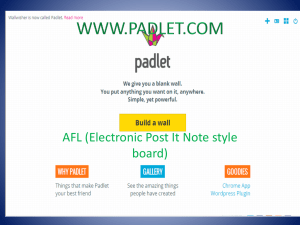
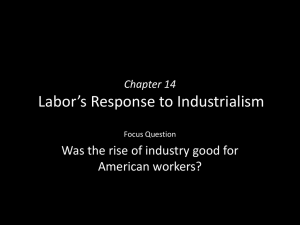
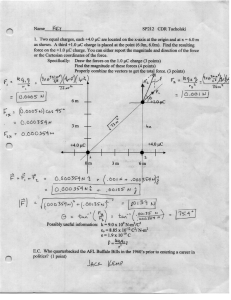
![afl_mat[1]](http://s2.studylib.net/store/data/005387843_1-8371eaaba182de7da429cb4369cd28fc-300x300.png)
